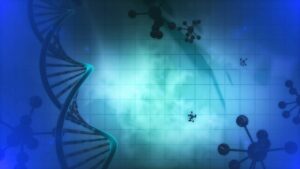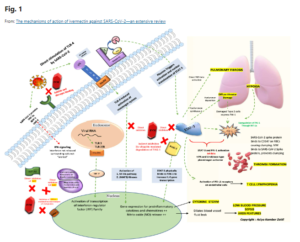There are more videos in our ‘Treatments’ page.
Clinical and Diagnostic Features of Post-Acute COVID-19 Vaccination Syndrome (PACVS)
Preprint – In a further study conducted in collaboration with doctors from Düsseldorf University Hospital, clear differences were found between standard serum markers in PACVS (#PostVac) sufferers and healthy individuals.
Exploring autophagy in treating SARS-CoV-2 spike protein-related pathology
Read how fasting can have therapeutic benefits for spike protein related conditions.
Gastrodin, a Promising Natural Small Molecule for the Treatment of Central Nervous System Disorders, and Its Recent Progress in Synthesis, Pharmacology and Pharmacokinetics
Also read substack “Friday Hope: Gastrodin: Protecting Against the Spike by Inhibiting Ang II, Inflammation and Amyloid Aggregation”
Detection of recombinant Spike protein in the blood of individuals vaccinated against SARS-CoV-2: Possible molecular mechanisms
“mRNA-based vaccines consist of injectable solutions of mRNA encoding for a recombinant Spike, which is distinguishable from the wild-type protein due to specific amino acid variations introduced to maintain the protein in a prefused state. This work presents a proteomic approach to reveal the presence of recombinant Spike protein in vaccinated subjects regardless of antibody titer.”
Relationships between hyperinsulinaemia, magnesium, vitamin D, thrombosis and COVID-19: rationale for clinical management
This paper is about Covid19 treatment but could have applications for Long Covid and Vaccine Injury. It highlights how hyperinsulinaemia depletes magnesium and therefore vitamin D uptake, “consequently decreasing plasma membrane negative charge between red blood cells, platelets and endothelial cells, thus increasing agglutination and thrombosis. Patients with … hyperglycaemia and/or hyperinsulinaemia should be placed on a restricted refined carbohydrate diet, …….. Supplemental magnesium, vitamin D and zinc should be administered. By implementing refined carbohydrate restriction, three primary risk factors, hyperinsulinaemia, hyperglycaemia and hypertension, that increase inflammation, coagulation and thrombosis risk are rapidly managed.”
Mito-Nuclear Communication by Mitochondrial Metabolites and Its Regulation by B-Vitamins
This paper highlights how poor mitochondrial function can not only cause fatigue, immune issues but also cancer and type II diabetes. It discusses how B vitamins can help restore better mitochondrial function.
A randomized, double-blind, placebo-controlled clinical trial using a low-frequency magnetic field in the treatment of musculoskeletal chronic pain
All about Pulsed Electromagnetic Therapy and how it can help the management of pain. See more in our treatments page.
Persistence of S1 Spike Protein in CD16+ Monocytes up to 245 Days in SARS-CoV-2 Negative Post COVID-19 Vaccination Individuals with Post-Acute Sequalae of COVID-19 (PASC)-Like Symptoms
Differences between vaccine injured and long covid patients can be seen – spike S1 persists up to 245 days in vaccinated individuals, at higher counts than individuals with Long Covid. Mutant S1 and S2 were not present.
Authors recommend treatment with statins and ccr5 antagonists. You can watch a video explaining this study by Drbeen, immunologist HERE
Automated microscopic measurement of fibrinaloid microclots and their degradation by nattokinase, the main natto protease
Endtoxin induced blood clots dissolved in vitro by natokinase
The role of glutamine in supporting gut health and neuropsychiatric factors
Abstract
Recent research has shown that the amino acid glutamine can positively affect gut health by supporting the gut microbiome, gut mucosal wall integrity, and by modulating inflammatory responses. As modulated by the vagus nerve, via the enteric nervous system, the gut-brain connection can impact the brain’s neurochemical environment. Poor gut health can disrupt the balance of neurotransmitters, which can result in neuropsychiatric based conditions such as depression. Glutamine supplementation may provide significant adjunctive nutritional support in cases of depression by promoting proper gut health and function.
A synbiotic preparation (SIM01) for post-acute COVID-19 syndrome in Hong Kong (RECOVERY): a randomised, double-blind, placebo-controlled trial
Interpretation
The specific ratio of the three probiotic bacteria was decided based on the relative abundance of these species naturally present in the healthy Chinese population.
Conclusion We hypothesise that low bacterial diversity and depletion of Bifidobacterium genera either before or after infection led to reduced proimmune function, thereby allowing SARS-CoV-2 infection to become symptomatic. This particular dysbiosis pattern may be a susceptibility marker for symptomatic severity from SARS-CoV-2 infection and may be amenable to preinfection, intrainfection or postinfection intervention.
In this perspective we defined four groups of individuals who might be susceptible to develop vaccination-induced ASIA: patients with prior post-vaccination autoimmune phenomena, patients with a medical history of autoimmunity, patients with a history of allergic reactions, and individuals who are prone to develop autoimmunity (having a family history of autoimmune diseases; asymptomatic carriers of autoantibodies; carrying certain genetic profiles, etc.).
Brain entry of SARS-CoV-2 through endothelial cells is prevented by melatonin through allosteric binding to human angiotensin-converting enzyme 2 (ACE2), which interferes with the cell entry receptor function of ACE2 for SARS-CoV-2. Our findings open new perspectives for the repurposing of melatonergic drugs in the prevention of brain infection by SARS-CoV-2 and COVID-19-related long-term neurological symptoms.
In this perspective we defined four groups of individuals who might be susceptible to develop vaccination-induced ASIA: patients with prior post-vaccination autoimmune phenomena, patients with a medical history of autoimmunity, patients with a history of allergic reactions, and individuals who are prone to develop autoimmunity (having a family history of autoimmune diseases; asymptomatic carriers of autoantibodies; carrying certain genetic profiles, etc.).

